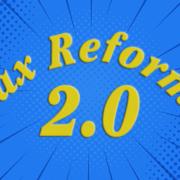The Tax Cuts and Jobs Act (TCJA) significantly expands bonus depreciation under Section 168(k) of the Internal Revenue Code for both regular tax and alternative minimum tax (AMT) purposes. Now, the IRS has released proposed regulations that clarify the requirements that businesses must satisfy to claim bonus depreciation deductions. Although the regs are only proposed at this point, the IRS will allow taxpayers to rely on them for property placed in service after September 27, 2017, for tax years ending on or after September 28, 2017.
Previous law
Under pre-TCJA law, businesses could claim a first-year bonus depreciation deduction equal to 50% of the basis of qualifying new (not used) assets placed in service in 2017. The deduction was available for the cost of qualifying new assets, including computers, purchased software, vehicles, machinery, equipment and office furniture. Used assets didn’t qualify for the deduction.
You also could claim 50% bonus depreciation for qualified improvement property (QIP), generally defined as any qualified improvement to the interior portion of a nonresidential building if placed in service after the building was placed in service. QIP costs didn’t include costs for the enlargement of a building, an elevator, an escalator, or a building’s internal structural framework.
TCJA changes
The TCJA allows 100% first-year bonus depreciation in Year 1 for qualifying assets placed in service between September 28, 2017, and December 31, 2022. The bonus depreciation percentage will begin to phase out in 2023, dropping 20% each year for four years until it expires at the end of 2026, absent congressional action to extend the break. (The phaseout reductions are delayed a year for certain property with longer production periods and aircraft.)
To qualify for 100% bonus depreciation, property generally must:
- Fall within the definition of “qualified property,”
- Be placed in service between September 28, 2017, and December 31, 2022, and
- Be acquired by the taxpayer after September 27, 2017.
The proposed regs provide additional guidance on several of these elements.
Qualified property
Under the proposed regs, “qualified property” for bonus depreciation purposes is defined to include:
- Property depreciated under the Modified Accelerated Cost Recovery System (MACRS) that has a recovery period of 20 years or less (generally, tangible personal property),
- Certain computer software,
- Water utility property,
- Qualified film or television productions,
- Qualified live theatrical productions, and
- Specified plants.
For 50% first-year bonus depreciation, it also includes QIP acquired after September 27, 2017, and placed in service before January 1, 2018.
Congress intended for QIP placed in service after 2017 to have a 15-year MACRS recovery period, which would make it eligible for bonus depreciation. However, due to a drafting error, the 15-year recovery period for QIP isn’t reflected in the statutory language of the TCJA. Absent a technical correction to fix this glitch, QIP placed in service after 2017 has a 39-year MACRS recovery period and, therefore, is ineligible for bonus depreciation.
Qualified property also doesn’t encompass property that must be depreciated under the Alternative Depreciation System (ADS). That includes MACRS nonresidential real property, residential rental property and QIP held by real estate businesses that elect out of the TCJA’s limit on the business interest deduction. It also includes property with a recovery period of 10 years or more held by a farming business that elects out of the business interest limit.
The proposed regs detail how taxpayers can elect out of bonus depreciation. They also provide rules for electing 50% bonus depreciation, instead of 100% bonus depreciation, for property acquired after September 27, 2017, and placed into service during the taxable year that includes September 28, 2017.
Acquired used property
The proposed regs provide that the acquisition of used property is eligible for bonus depreciation if the property wasn’t used by the taxpayer or a predecessor at any time prior to acquisition of the property. Property is treated as used by the taxpayer or a predecessor before acquisition only if the taxpayer or a predecessor had a depreciable interest in the property at any time before the acquisition, regardless of whether the taxpayer or predecessor actually claimed depreciation.
Businesses that lease property, therefore, can acquire that property at the end of the lease and qualify for bonus depreciation. If a business has a depreciable interest in improvements made to lease property and subsequently acquires the property, the unadjusted depreciable basis of the property that’s eligible for the additional first-year depreciation excludes the unadjusted depreciable basis attributable to the improvements.
If a business initially acquires a depreciable interest in a part of a property and later acquires an additional depreciable interest in it, the additional interest isn’t treated as being previously used by the business. If, however, the business holds a depreciable interest in a portion of a property, sells that portion or part of it, and then acquires a depreciable interest in another part of the same property, it’s treated as previously having a depreciable interest in the property, up to the amount of the part for which the business held a depreciable interest in the property presale.
Used property also must satisfy certain related party and carryover basis requirements, as well as certain cost requirements. The proposed regs include antiabuse provisions for members of a consolidated group, certain acquisitions in accordance with a series of related transactions, and syndication transactions. And they explain how the new bonus depreciation rules apply to a variety of transactions involving partnerships holding assets that are otherwise eligible for bonus depreciation (for example, used machinery or vehicles).
Date of acquisition
The TCJA states that property won’t be treated as acquired after the date on which a “written binding contract” is entered into for the acquisition. The proposed regs clarify that the closing date, delivery date or other such date is irrelevant when determining the date of acquisition — only the date the contract is entered into matters for this purpose.
Under the proposed regs, a written contract is binding if it’s enforceable under state law against a taxpayer (or a predecessor) and doesn’t limit damages to a specified amount. A contractual provision that limits damages to at least 5% of the total contract price won’t be treated as limiting damages to a specified amount.
A letter of intent for an acquisition isn’t a binding contact, according to the proposed regs. Further, supply agreements aren’t treated as written binding contracts until a taxpayer provides the amount and design specifications of the property.
The proposed regs eliminate the safe harbor for property produced under a contract. Such property is no longer treated as self-constructed property, so the date that the contract is entered into generally is the date of acquisition.
Actual self-constructed property isn’t subject to the written binding contract requirement. The acquisition rules for self-constructed property are met if the taxpayer begins manufacturing, constructing or producing the property after September 27, 2017.
The rules regarding the eligibility of acquired used property could have a significant impact on mergers, acquisitions and divestitures. For example, buyers might prefer to structure a transaction as an asset purchase rather than a stock acquisition to take advantage of bonus depreciation. Businesses also should review transactions that have closed but are subject to the new rules to ensure they achieve the optimal tax treatment.
Amount of the deduction
According to the proposed regs, the amount of the first-year depreciation deduction equals the applicable percentage of the property’s unadjusted depreciable basis. The unadjusted depreciable basis generally is limited to the property’s basis attributable to manufacture, construction or production of the property before January 1, 2027.
Plan carefully
Businesses that wish to take advantage of the new rules for fiscal tax years beginning in 2017 but ending in 2018 may have several bonus depreciation options, and amended returns may be advisable in some cases. We can help you make the most of the new rules for fiscal tax years beginning in 2017 and going forward.
© 2018












